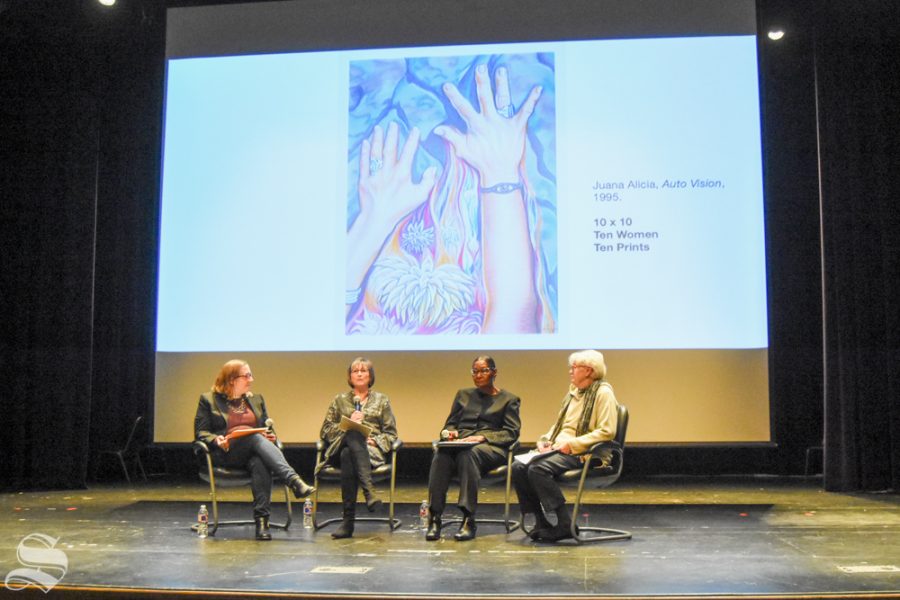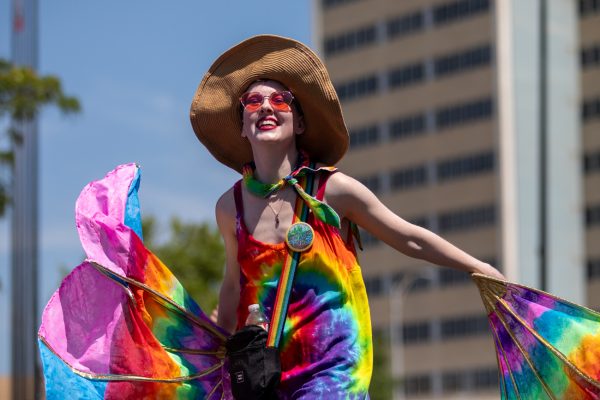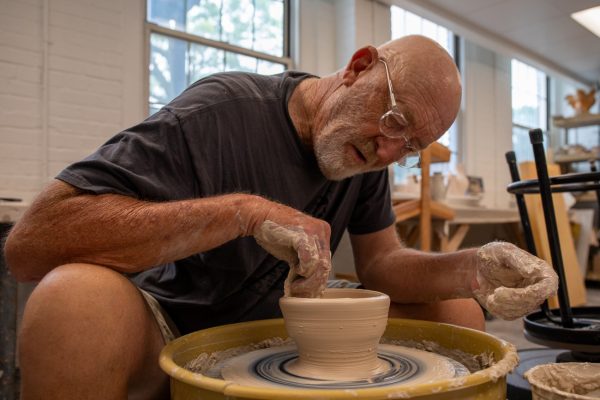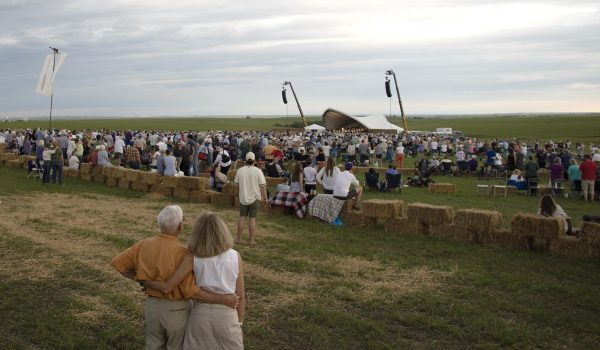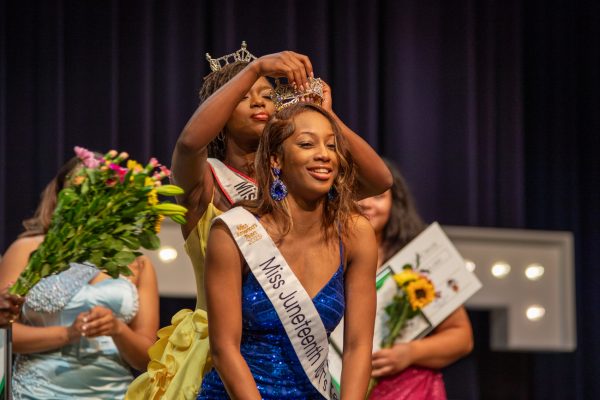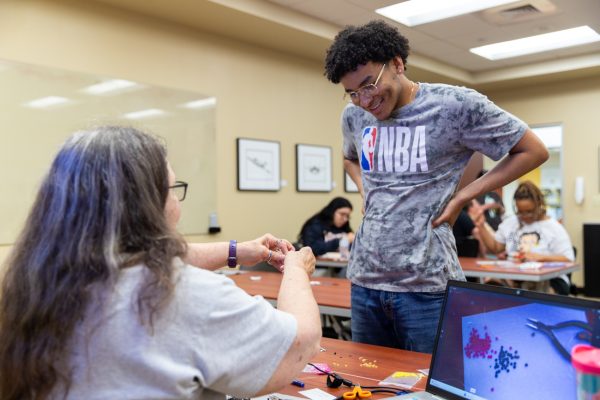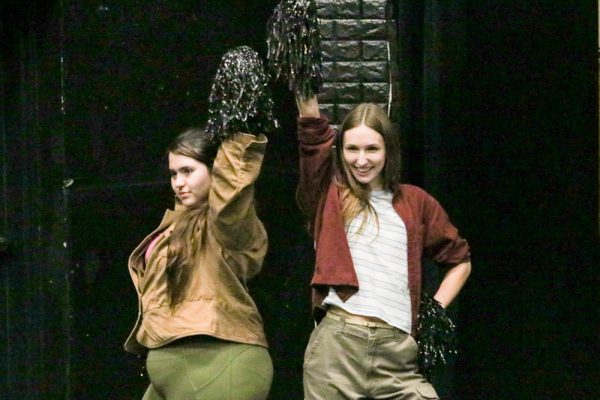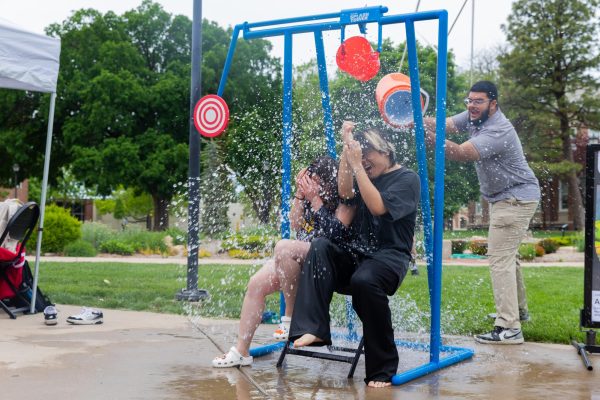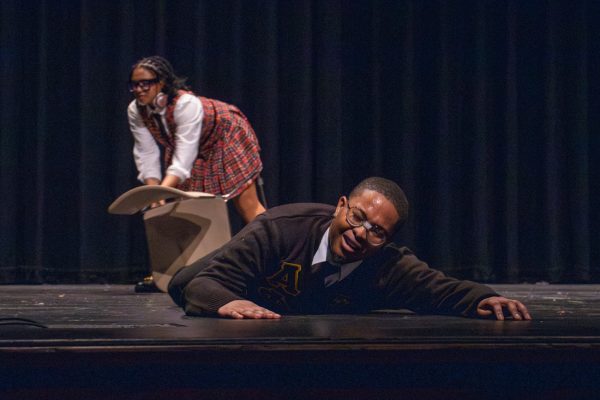‘Voices from the Vault’ panelists discuss 1970s feminism movements in the American West
WSU Women’s Studies graduate Lee Starkel, WSU Women’s Studies instructor Carolyn Williams, and Novelene Ross, former chief curator of the Wichita Art Museum speak at “Voices from the Vault Panel: Feminism in the West in the 1970s” in the CAC Auditorium on Tuesday.
“Voices from the Vault” is a five-year lecture series leading up to the Ulrich Museum of Art’s 50th anniversary in 2024.
Tuesday night, the museum hosted “Voices from the Vault Panel: Feminism in the West in the 1970s.”
The panel consisted of three members: WSU women’s studies graduate Lee Starkel, WSU women’s studies instructor Carolyn Williams, and Novelene Ross, former chief curator of the Wichita Art Museum.
Robin Henry, WSU associate professor of history, moderated the event. She opened the panel discussion by informing the audience of the West’s importance during the early feminist movements.
“The American West, or really even just the Great Plains, are often kind of the ‘flyover zone’ . . . I think any of us who live here or spend any part of our lives here realize very quickly that that’s too simple,” Henry said. “The American West — in many ways — has been a place for opportunity and for testing out and experiencing different ideas, ways of living . . . that is also included in women’s suffrage, women’s rights.”
The panelists also spoke specifically about WSU’s involvement in the feminist movement. WSU has the second-oldest women’s studies program in the country, which Starkel discussed the history of.
The first women’s studies class was provided in 1971. It was on the history of women’s liberation. Because of the class’ success, the university offered additional classes the next year.
The Board of Regents approved a major in Women’s Studies in 1976.
Williams said that when she started taking classes at WSU, she had no idea what she’d actually end up studying.
“I took a class . . . It was a women’s leadership course. I didn’t really have an interest or a plan on what I really wanted to do,” Williams said.
Williams said she was drawn to continue down the women’s studies path because of the discussions she participated in in class.
“We would talk about why African Americans were not getting the same advantages that whites were getting . . . we would talk about how the schools were very different,” Williams said.
She said that what she took away from the class was “fearlessness.”
“I felt encouraged, I felt motivated,” she said.
This class led to Williams getting involved with student organizations that worked to change real-world issues.
Even though the 70s movements took place almost 50 years ago, Ross it’s still an ongoing struggle to get women equally represented in the world of art. But there have been some giant leaps in the right direction, she said.
“You will see in our local museums and national museums, there are a great many more solo exhibitions by women, more acquisitions of art for the permanent collection by women,” Ross said.
While Ross said women and men are still not equal in the art world, museums are working to achieve equality.
“Now we’re way behind . . . but if you’ve read the news in The Times about the renovation of the Museum of Modern Art in New York, you know that they are really serious,” Ross said.
The museum has decided to take down some work by men down and replace it with work from female artists.
Panelists also discussed topics such as segregation, sexual assault, physical violence, political trends in Kansas, and more.
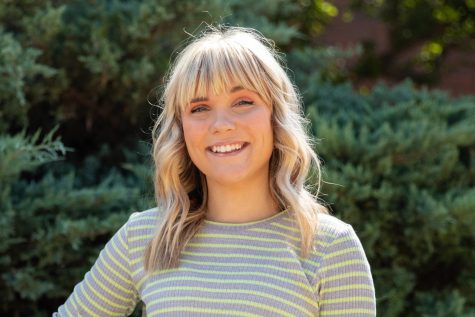
Lindsay Smith is the former editor-in-chief and newsletter editor for The Sunflower. Smith was a journalism major at Wichita State with a minor in creative...



